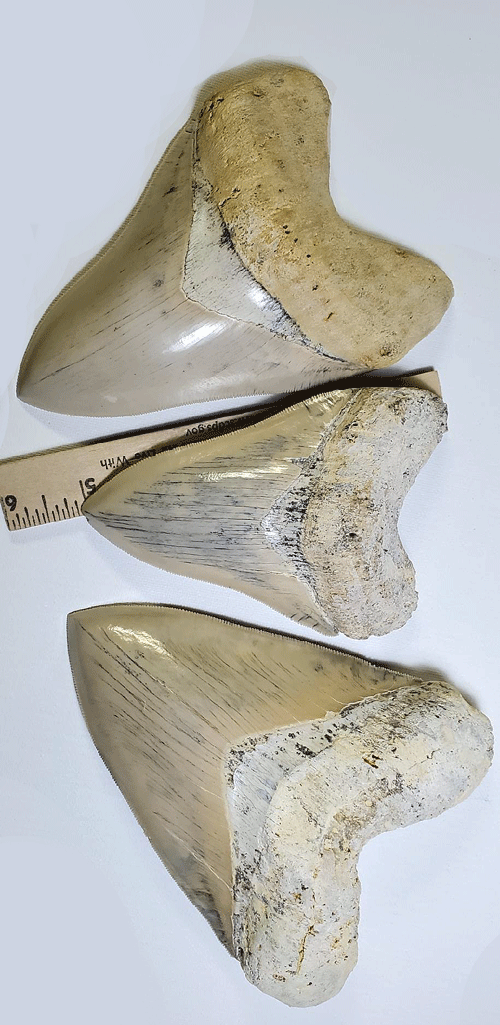
Do you dream of owning a piece of prehistoric wonder? Megalodon teeth are not just big—they are massive, often the size of your hand! However, with their popularity, fake Megalodon teeth have entered the market. Knowing how to tell if a Megalodon tooth is real is crucial, especially for enthusiasts and collectors like you.
Understand What You're Looking For
Megalodon teeth are treasures from the deep past when these giant sharks ruled the ocean. A real Megalodon tooth can be as large as seven inches long. It has a sharp, pointy look with tiny, fine lines along the edges. These lines are the tooth's serrations, like the edge of a steak knife. They help the Megalodon eat its prey. If these serrations seem too perfect or uniform, think twice because each tooth is worn down uniquely. Additionally, check for natural-looking imperfections and oddities in the tooth's shape—authentic teeth are not perfectly symmetrical due to natural wear and variations.
Check the Color and Quality
Megalodon teeth are buried for millions of years, absorbing minerals that change their color. Genuine teeth can range from black and gray to brown and even blue! The color should look like it belongs, seeped deep into the tooth. Be wary of colors that look painted on or are only surface deep—this is a common trick in a megalodon tooth fake vs real. Authentic teeth often have a marbled appearance with multiple shades blending naturally, unlike the solid, uniform coloration found in many fakes.
Feel the Weight
When you pick up a real Megalodon tooth, it should feel heavy for its size. Fakes often use lighter materials that don't mimic the dense weight of fossilized shark teeth. Holding a genuine tooth, you should sense the history it carries, heavy and solid. The weight should give you a feeling of holding something ancient, a fragment of a creature that swam the oceans long before humans walked the earth.
Examine the Enamel
The enamel, or outer coating, of a Megalodon tooth should be shiny and smooth but not perfect. Over millions of years, real teeth get tiny wear and tear. Fake teeth might look too flawless or have an artificial gloss that real fossils do not. True fossilized enamel should display a complex interplay of textures and glossiness, showing areas where the mineral infill is more pronounced and others where natural erosion has occurred.
Ask for Proof
Reputable sellers like BuriedTreasureFossils.com, which I started in 2000, will always provide information about where the tooth was found and its history. We connect directly with reliable fossil sources to bring you the best from around the world. This not only gives you peace of mind but also adds value to the fossil as part of its history and provenance.
Remember, a genuine Megalodon tooth is more than just a purchase—it's an investment in history. If you ever wonder - how to tell if a megalodon tooth is real, remember these tips and make sure your next treasure is a real piece of the ancient oceans, not just a replica. Better yet, shop directly from Buried Treasure Fossils and save yourself from purchasing a fake shark tooth. Authenticity is guaranteed.










